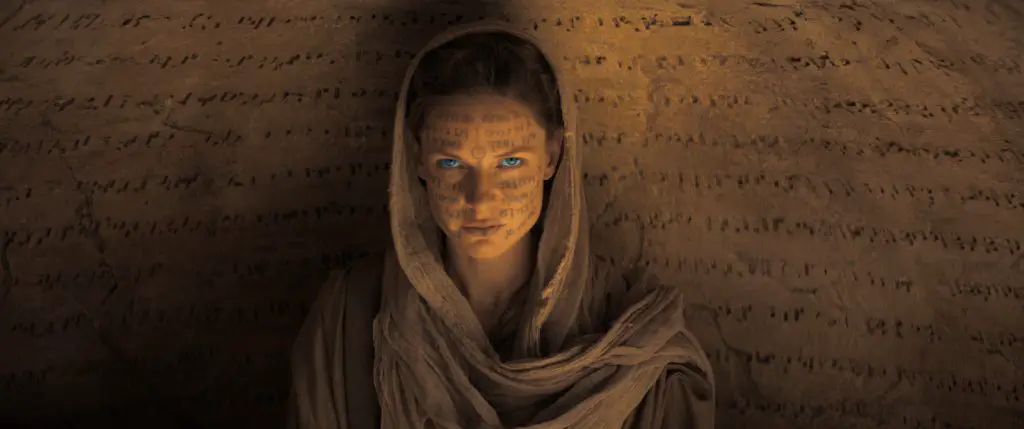
“Women Without Men,” the long awaited first feature film by renowned Iranian-born video artist Shirin Neshat, is a beautifully made, evocative and thoughtful meditation on the relationship between personal experience and the larger political and cultural forces which shape our lives. Based on a novel by Shahrnush Parsipur, the film uses the style of magic realism to tell an allegorical tale of several Iranian women in 1953, just at the moment when the democratically elected government of Dr. Mohammad Mossadegh falls to a (CIA-engineered) coup by the Shah. The story is framed as if it all takes place in the mind of Munis, a passionately political young woman who longs to be out in the streets, marching with the crowds who support Dr. Mossadegh, but is prevented from leaving the house by her strictly religious brother. The film opens with her desperate act of jumping off the roof of their house, and everything that follows is presented as if it takes place in her mind in the ten seconds before she hits the ground and is killed. This framing device helps to give a context to some of the wild, illogical events, and the obsession with death, which fill the story.
Neshat seems born to make movies. Every shot in the film is gorgeously framed and highly expressive. The sound textures, which mix music, natural sounds, and sometimes whispering voices, are beautifully realized. Some fans of her video installation pieces, which have been featured in museums worldwide, might have worried that she would be tempted to water down the radical vision of her earlier work when making a narrative feature. On the contrary, the vocabulary she has developed in her installations, in which an individual is almost always juxtaposed to a large crowd, often, as in “Turbulent” (1998), in the context of a musical performance, provides her with a perfect visual and musical language for telling a larger story of how, in Iran, the overwhelming political conflicts and violence always impinge on the private sphere, despite the desire of some Iranians to withdraw into a sheltered, private bubble. The women in this film, in particular, try to withdraw into the society of other women, to escape from the control and violence of men, but this is a strategy with only limited success.
Neshat excels at finding visual images to express complex ideas, such as the awkwardness of the way a woman moves through a public street while trying to keep herself covered by her manteau, which is contrasted to the bodily freedom of the women in their private orchard, where they can wear whatever they like. Few filmmakers have attempted the tricky task of capturing the literary tone of magic realism on film, in which a realistic setting must be permeated with fable-like magic. There are, for example, few films based on the novels of Gabriel Garcia Marquez. Neshat captures the feeling of Parsipur’s magic realist novel successfully through images such as her orchard, in which the trees are all planted in a perfectly regular grid, combining the natural with the artificial. The cacophony of bird-song and the shots of sunlight on the mist infuse the orchard scenes with mythic overtones.
It can be argued that none of the characters in “Women Without Men” are real people: they don’t have any of the depth and contradictory nature of full characters. There is a prostitute who is consumed by guilt, and that is all there is to her. A group of intellectuals and artists have a few lines of dialogue to let us know that they are “intellectuals and artists,” and we never learn more about them than that. The rich privileged woman in the story is simply a symbol of A Rich, Privileged Woman. But Neshat is clearly not interested in focusing on the psychology of the individual. Like Brecht, she wants us to focus on the larger social context of the story. The actors are able to give depth and resonance to their symbolic roles. When we see the prostitute frantically scrubbing herself in the public baths to cleanse herself of defilement, or the young woman so desperate for news of political events that she wanders into a men’s coffeehouse just so that she can listen to the radio, these scenes have a truth and power which help them transcend the one-dimensional nature of the roles and raise them to the level of archetypes. Undoubtedly, if in Neshat’s adaptation of the source novel she had created characters with more nuance and complexity (as Brecht did), she could have achieved a more powerful and subtle film. Since this is her first feature, I will look forward to a more complex, nuanced discourse in future films, but “Women Without Men” is already an assured, masterful beginning. Neshat’s sheer ability to put together sounds and images is both beautiful by itself, and also a powerful way of telling her story.


